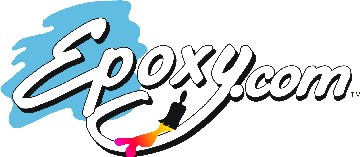During my last blog on January 10, 2016 about “Surface Preparation When Installing Concrete” we discussed among other things preparation of concrete by acid etching. I want to revisit that now in a slightly less formal explanation about why it is not the best of the possible methods of doing surface preparation.
Acid etching does not remove most contamination from the concrete. It is necessary before you acid etch concrete to remove most typical type of contamination like oil, grease, paint, mastic, and a host of other things first.
Acid etching attacks the Portland Cement. The Portland cement is the “glue” that is holding your concrete together. So acid etching done incorrectly will do more damage than good. Even if you do it correctly your floor may not be as strong a substrate for epoxy (or anything else) than it would have been if you mechanically cleaned it.
If you are going to acid etch I suggest that you not only do it properly but follow it with abrasive cleaning, to remove the soft top part of your concrete that is damaged by the acid etching. When I was an installer of epoxy products I rarely if ever acid etched but instead did mechanical cleaning.
Here are some of the reasons acid etching may not be desirable for your job.
- Acid etching is a risk to safety. Acid can damage items at your jobsite and pose a risk of injury to the people in the area.
- Mechanical cleaning is better for the environment, no acid will find its way into the ecosystem.
- Mechanical cleaning allows quicker turnaround time, you don’t have to wait overnight for the substrate to dry.
- Mechanical cleaning gives you more consistently high quality substrate than acid etching does.
In summary, whenever you can use abrasive cleaning it is safer and better than acid etching.
Please email me your questions to norm@epoxy.com or visit our website at www.epoxy.com
